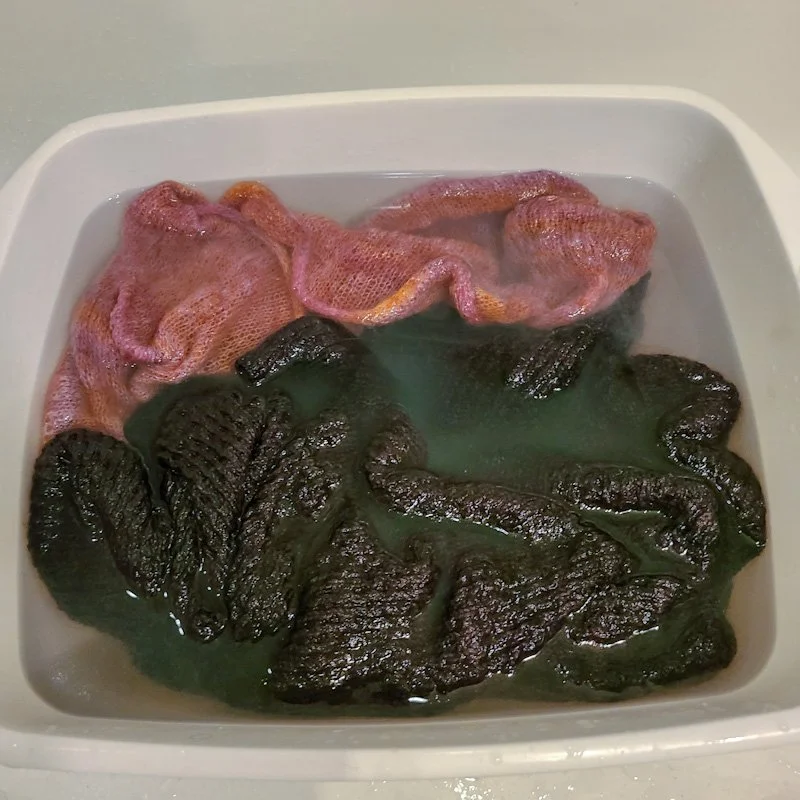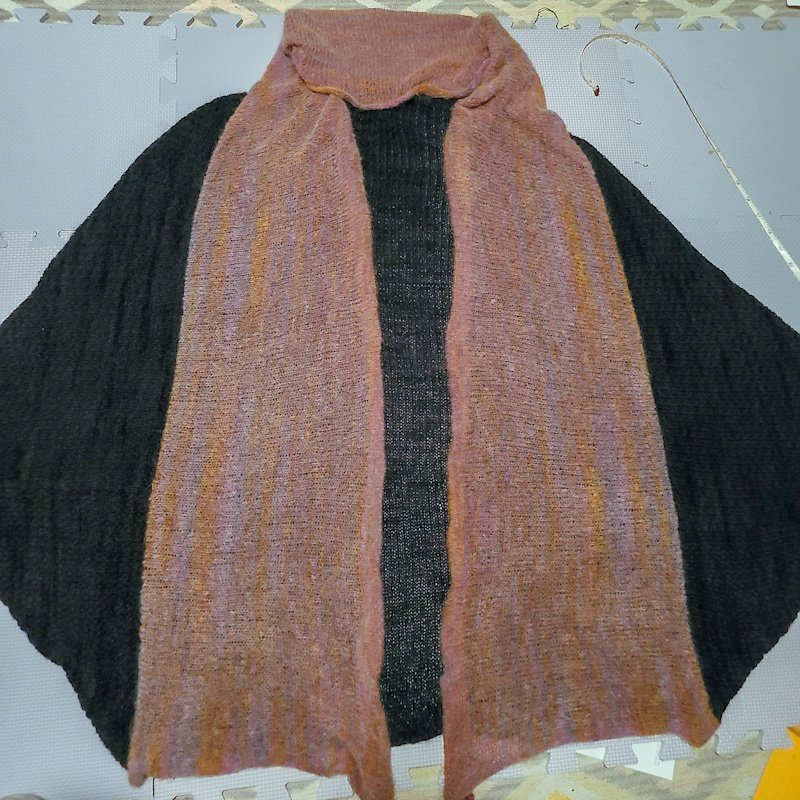Help! My Knitting Smells Like a Campfire!
My knit night took advantage of a recent warm evening to meet outside around a fire pit. We had a great time, but it was a little breezy and the smoke drifted quite a bit. When I got home, I realized that not only did everything on my person reek of smoke (it took TWO showers to get all the smoke smell out of my hair), but the knitting I’d been happily working on all evening did as well.
Since we’re heading into campfire/firepit peak season, I thought I’d share what I learned about getting smoke smell out of your knitting so you too can enjoy an evening knitting by the fire without too much worry.
Lesson 1: If it’s 100% wool, just let it air out.
Wool and most other animal fibers are naturally odor resistant so if your knitting is 100% wool, alpaca, cashmere, or mohair, you can likely just drape it somewhere safe and let it air out. I had my Fox Paws scarf with me that evening and not only was it far less smelly than any of my other belongings immediately after I got home, by the next morning it didn’t smell at all.
However, if you have plant or synthetic fibers in your yarn (even if they are blended with animal fibers), you may not be as lucky. I was working on my Big Cozy Cardigan which was a wool/cashmere/nylon blend with an alpaca/silk collar. The wool blend’s odor did fade quite a bit (it was only 10% nylon, so that might have been a small enough amount to avoid too much absorption), but the silk in the alpaca blend was trouble – I definitely would not have been able to get it completely odor free just by waiting.
Lesson 2: If you can’t wash it, try vodka.
I was in the process of completing the I-cord bind off on the alpaca part of the cardigan, so I really didn’t want to risk dropping stitches or getting things pulled out of shape by washing it at this stage. However, it still absolutely reeked and I didn’t love the idea of having to hold it on my lap to work with it. So I attempted to mist the entire cardigan with vodka. Here’s a very thorough primer from someone who works with theater costumes on how to use vodka to deodorize clothing that can’t be washed. I used 100% vodka that I poured into a little atomizer travel bottle, so I was thoroughly misting the fabric but not soaking it.
This worked really well to get the remaining smell out of the wool blend yarn. On the alpaca it didn’t work that well at all. This may be in part because alpaca is considerably more water resistant than wool, and it was keeping the vodka from reaching the silk part of the yarn. I also didn’t pat or rub the damp cardigan because the alpaca was died with natural dyes and I wanted to be extra careful not to disturb them. I did several rounds of misting and while immediately afterwards it would smell a bit better, as soon as it dried (which was within minutes) the smell would come back, if slightly muted. I managed to get it to a level of funk I could deal with in order to at least finish the knitting before I washed it.
Lesson 3: There may be no substitute for a good soak with wool wash.
If you are a lot further from the end of your knitting project than I was or just can’t stand the smell after trying other strategies, you can still wash an in progress knitting project. However, you should slip it on to a long piece of waste yarn before you do so – knitting needles aren’t designed to soak underwater and they could rust or discolor onto your knitting in ways you aren’t expecting.
You should also use a real wool wash, preferably one that doesn’t need to be fully rinsed out. I am a particular fan of Woolin & Co’s wash bars and that’s what I used here. (One thing I like about wool wash in bar form is that it’s easy to concentrate extra suds on particularly smelly/dirty areas – like armpits, sock soles, or in this case, the entire alpaca collar.) I got it nice and soapy in cold water and left it to soak for 15 minutes, then blocked it as I would under any other circumstances. I haven’t smelled even a trace of firepit on it since.
Also, yes, this does mean that my Big Cozy Cardigan is FINALLY done and just in time for the early spring crisp-but-not-cold weather to return!
Have you ever needed to get campfire smell (or any other horrible odor) out of your knitting? How did you do it?


